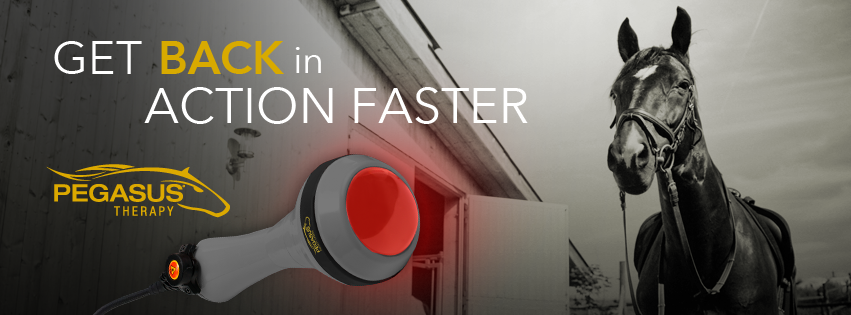Equine Therapy Programs: Changing Lives One Experience at a Time
Equine Therapy Programs: Changing Lives One Experience at a Time
Blog Article
Just How Laser Treatment in Horse Treatment Is Transforming Veterinary Look After Steeds
Laser treatment has emerged as a transformative technique in equine veterinary care, giving a non-invasive remedy that accelerates healing and enhances total wellness. Leveraging accurate light wavelengths, this advanced therapy promotes cellular regrowth, minimizes inflammation, and minimizes pain. Its efficacy expands from musculoskeletal injuries to persistent disorders like osteoarthritis, dramatically enhancing flexibility and life high quality for horses. The transportability and adaptability of laser therapy tools even more highlight their growing necessity among vets. As we explore the detailed mechanics and real-world successes, the extensive influence on equine medical methods becomes significantly evident.
Recognizing Laser Therapy

The technology behind laser therapy is grounded in the concept of photochemistry, where photons are soaked up by chromophores within cells, leading to increased ATP manufacturing and modulation of reactive oxygen species (Equine Therapy). This, consequently, promotes cellular proliferation, decreases swelling, and speeds up recovery. Vet specialists make use of various kinds of lasers, including low-level lasers (LLLT) and high-power Course IV lasers, depending on the certain healing purposes and the nature of the equine problem being dealt with
Different laser wavelengths and power setups are meticulously selected to target different cells depths and accomplish desired professional results. Security protocols are extremely important, as inappropriate usage can lead to thermal damages or suboptimal healing impacts. Therefore, a comprehensive understanding of laser treatment's devices and applications is important for its reliable application in equine veterinary practice.
Advantages for Equine Wellness
The myriad benefits of laser therapy for equine health include enhanced healing, discomfort reduction, and boosted flexibility. This advanced therapy technique leverages specific wavelengths of light to permeate tissues, promoting mobile feature and advertising quick tissue repair work. The non-invasive nature of laser therapy guarantees marginal stress and anxiety and discomfort for the steed, promoting a smoother healing procedure.
Enhanced recovery is one of the primary advantages, as laser therapy accelerates mobile regeneration and collagen synthesis. Discomfort reduction is attained through the anti-inflammatory results of laser therapy, which decreases swelling and lowers the production of pain-inducing chemicals.
By lowering inflammation and pain, and enhancing cells repair, laser treatment assists in restoring joint function and muscular tissue adaptability. Hence, laser therapy stands as a transformative tool in contemporary equine veterinary treatment.
Common Problems Treated
Laser treatment has become a flexible therapy choice for a variety of typical equine conditions. Amongst these, bone and joint injuries are especially responsive to laser treatment. Equine Therapy. Soft tissue injuries, such as tendonitis and tendon stress, gain from the anti-inflammatory and analgesic results of laser treatments, which speed up recovery and reduce discomfort. In addition, laser treatment works for problems like osteoarthritis, where it assists minimize joint swelling and promote cells repair work.
Wound monitoring is another area where laser treatment has actually shown substantial promise. Chronic injuries or slow-healing ulcers can be particularly challenging in horses, but laser therapy boosts cellular regeneration and boosts blood circulation, therefore quickening the recovery procedure. Laser therapies have actually been efficiently used in handling unguis conditions such as laminitis and abscesses, minimizing pain and promoting much faster recovery.

Innovation Behind Laser Therapy
Beyond the myriad conditions treatable with laser treatment, the technology itself values closer assessment. At the heart of laser therapy is making use of specific wavelengths of light to permeate cells and evoke organic actions. These Learn More Here wavelengths, commonly varying from 600 to 1000 nanometers, are selectively taken in by chromophores in my site the skin, muscle, and various other tissues, prompting a cascade of mobile events.
Laser gadgets used in veterinary medication frequently utilize low-level laser treatment (LLLT) or chilly laser treatment. Unlike high-powered surgical lasers, these gadgets operate at lower energy degrees, maximizing therapeutic advantages while decreasing thermal damages. The energy from the laser light boosts adenosine triphosphate (ATP) manufacturing, boosts cellular metabolic process, and accelerates cells repair work processes.

Success Stories and Study

Showcasing the tangible advantages of laser therapy, many success stories and case research studies illuminate its transformative effect on equine wellness. One such instance entails a pureblooded racehorse struggling with chronic tendonitis. Conventional therapies generated very little enhancement, yet after incorporating laser treatment into the routine, the steed exhibited considerable decreases in swelling and discomfort within weeks, ultimately going back to competitive auto racing.
One more compelling instance features a dressage equine diagnosed with extreme pain in click this the back, restricting its efficiency. A veterinary group employed low-level laser treatment (LLLT) to target the irritated areas, causing significant renovation in adaptability and a noteworthy decrease in pain. Over a number of sessions, the horse regained its peak kind, showcasing the efficiency of laser treatment in resolving bone and joint concerns.
In addition, a research conducted at a leading equine clinic analyzed 50 horses with different soft tissue injuries treated with laser therapy. The results stood out: 85% of the horses demonstrated accelerated healing times and improved mobility. These cases emphasize the flexibility and efficiency of laser treatment in equine medicine, using a non-invasive, scientifically-backed technique to boosting recovery and performance in horses.
Final Thought
Laser therapy is changing equine vet care by supplying a non-invasive treatment that accelerates healing, lowers inflammation, and eases pain. With its performance in dealing with a series of problems, from bone and joint injuries to persistent ailments like osteoarthritis, this modern technology substantially improves equine health and wheelchair. The mobility and flexibility of laser therapy better emphasize its transformative impact on vet techniques, solidifying its role as a necessary device in contemporary equine medical care.
Report this page